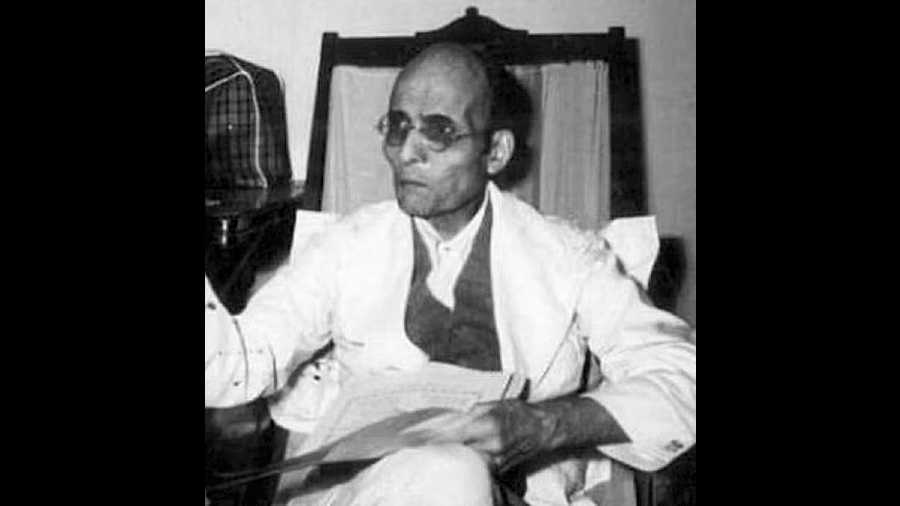Book: Hindutva And Violence: V.D. Savarkar And The Politics Of History
Author: Vinayak Chaturvedi
Publisher: Permanent Black
Price: ₹1,095
The soaring popular interest in Vinayak Damodar Savarkar, the founding father of Hindu nationalism, is showing itself in many ways. It is visible in the ruling Bharatiya Janata Party’s unqualified obeisance to him — his portrait hangs on the wall of Parliament’s Central Hall. It is also evident in the obsessive inclination of every ‘liberal’ political party to attribute its current misfortunes to the ‘teachings’ of Savarkar. There is thus confusion in the ranks of the losing side with regard to the content of such teachings.
Vinayak Chaturvedi, who teaches history at the University of California in Irving, was given his first name by Dr Dattatreya Parchure, who had been convicted for his role (the supply of the murder weapon) in the murder of Mahatma Gandhi. Chaturvedi writes that Parchure had voluntarily suggested the name, ‘Vinayak’, to many children who were taken to him for treatment.
This little personal story, tucked away in the concluding section of Chaturvedi’s book, is significant for it reveals the author’s background. But Chaturvedi’s book is far from a ‘revisionist history’ (like A.J.P. Taylor’s account of the Second World War). Rather, it is a complex tapestry of Savarkar’s ideas and their interaction with events, as he stood at the intersection of ‘writing’ history and ‘making’ it. While navigating the moments when Savarkar ‘made’ history — by sending an acolyte to murder a British official in London, by conveniently turning into an Islamophobe from a radical nationalist, by being the invisible architect of Gandhi’s killing — Chaturvedi treads cautiously, almost touching the borderline of revisionist history. Just as Savarkar argued in his seminal work, Essentials of Hindutva, that Hindutva is not a word but a history in full, Chaturvedi, too, takes a panoramic view of Savarkar’s intellectual journey. And that is a long journey, from an early stopover at the Italian revolutionary, Giuseppe Mazzini, and his secret organisation, Young Italy, to a dive into India’s ancient history, culminating in the Hindutva theory. The writing of these histories carried thick layers of ‘history-making’.
Hindutva and Violence deals with some foundational issues — such as non-violence — afflicting modern India without being judgmental. Chaturvedi has reopened the well-known 1909 Vijayadashami day meeting between Savarkar and Gandhi at India House in London in which Gandhi spoke about Rama and lauded him as a champion of peace. In reply, Savarkar quipped whether Rama could conquer Lanka peacefully and grimly reminded the guest speaker, “Barrister Gandhi, violence is a central feature of human history.” It was the beginning of the Hindu nationalist’s debate with Gandhi that did not end with the three bullets that felled the latter. It is shaping the country’s politics even now.
Savarkar was sent to the Cellular Jail in the Andamans as an anti-British terrorist. How and when did he become an anti-Muslim bigot whose writings are setting the path of his followers today? To answer that question, Chaturvedi cites the last letter from the Cellular Jail that Savarkar wrote to the British in 1920, promising to “loyally cooperate” with them to resist the “danger from the… fanatic hordes of Asia”. Timed with Gandhi’s emergence on the Indian scene, with Muslims as allies, it was a Queen’s gambit that paid off. Savarkar was moved back to the mainland, where he was free to spend the rest of his life fighting a new enemy










